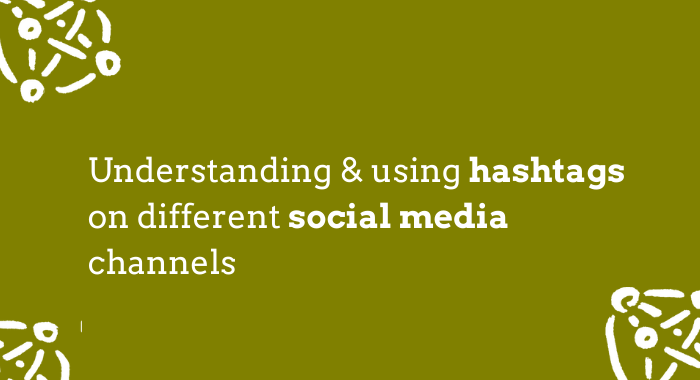Hashtags - why, which, where

When you write a social media post, are you an expert sprinkler of #hashtags or are you still mystified by the random-seeming words after the # sign?
It doesn’t help that each social media channel uses hashtags in different ways. And that some guidelines and algorithms have also recently changed. Here’s a quick overview.
First of all, what are hashtags?
They’re the short words or phrases that follow the #, that help perform the sorting process to decide which posts get seen, and when. Not all posts on all social media channels are shown to all followers all the time – there are simply too many. Each social media channel has algorithms and decision-points that decide which posts to show. Hashtags are a bit like an indexing system. They help users discover the information and content they’re most interested in, making posts searchable.
You can attract new followers and increase engagement by using the right number of the right hashtags at the right time on the right channel… Don’t worry, it’s not quite the lottery it might seem although some experimentation does help. Good hashtags can significantly increase your discoverability.
Instagram is where you’ll spot the most hashtags in a post, sometimes as many as 30. They are essential to increase engagement and followers but Instagram is changing. Whereas before, around 11 hashtags worked really well, now there are recommendations from instagram to reduce to as few as 3. Instagram is gradually moving to semantic keyword searches (more similar to websites) so your words and images will become searchable.
Don’t get too side-tracked by which hashtags are trending. If you only lose those, your posts will be just drowned out in the noise. Think about your visitors, what they’re looking for and why. Use a combination of different themed hashtags, such as location hashtags, some that are market specific e.g. #familyfriendly, and perhaps activity or mood ones. If you don’t want hashtags to detract from your posts, you can add hashtags in the first comments instead.
You might find it useful to use online tools such as Later to discover good Instagram hashtags for your business.
Twitter hashtags can double engagement compared to posts without hashtags but don’t overdo it. Try to keep to no more than a couple. Twitter only allows 280 characters so too many hashtags crowd out the message.
Facebook wasn't designed to use hashtags. When people started linking facebook and twitter or particularly facebook and Instagram posts, hashtags started to appear more frequently. They can work on facebook – when used in moderation, but still look a bit odd to many users. They’re less used as a search method within facebook. It’s much better to write posts specifically for Instagram and Facebook, otherwise you risk just boring followers and limiting engagement.
Hashtags can be key to increasing your network on LinkedIn, but don’t overdo it. LinkedIn thinks you’re spamming the channel when you use more than 3.
Which kind of hashtags work best?
It’s a good idea to use a combination of popular hashtags together with more niche ones. Too niche, and they don’t make a difference. Too big, and you’ll just get lost in the crowd.
Keep hashtags as short and understandable as possible. If you’re adding your own hashtag, make it conversational and stand out. Don't make it twee or long. Think about it from the perspective of your visitors - will they understand it?
If you often promote the same topics, it’s tempting to just cut and paste the same hashtags each time. Don’t do this. The algorithms penalise this (lazier) approach and you may even get a temporary ban. It also cuts down on experimentation, so by sticking to the same old hashtags you won’t discover newer, more effective ones.
Whatever you do, remember that hashtags can help increase followers and build engagement but they’re just one part of social media. It’s essential you think through your main messages too, matching them to your markets.


0 comments
Leave a comment